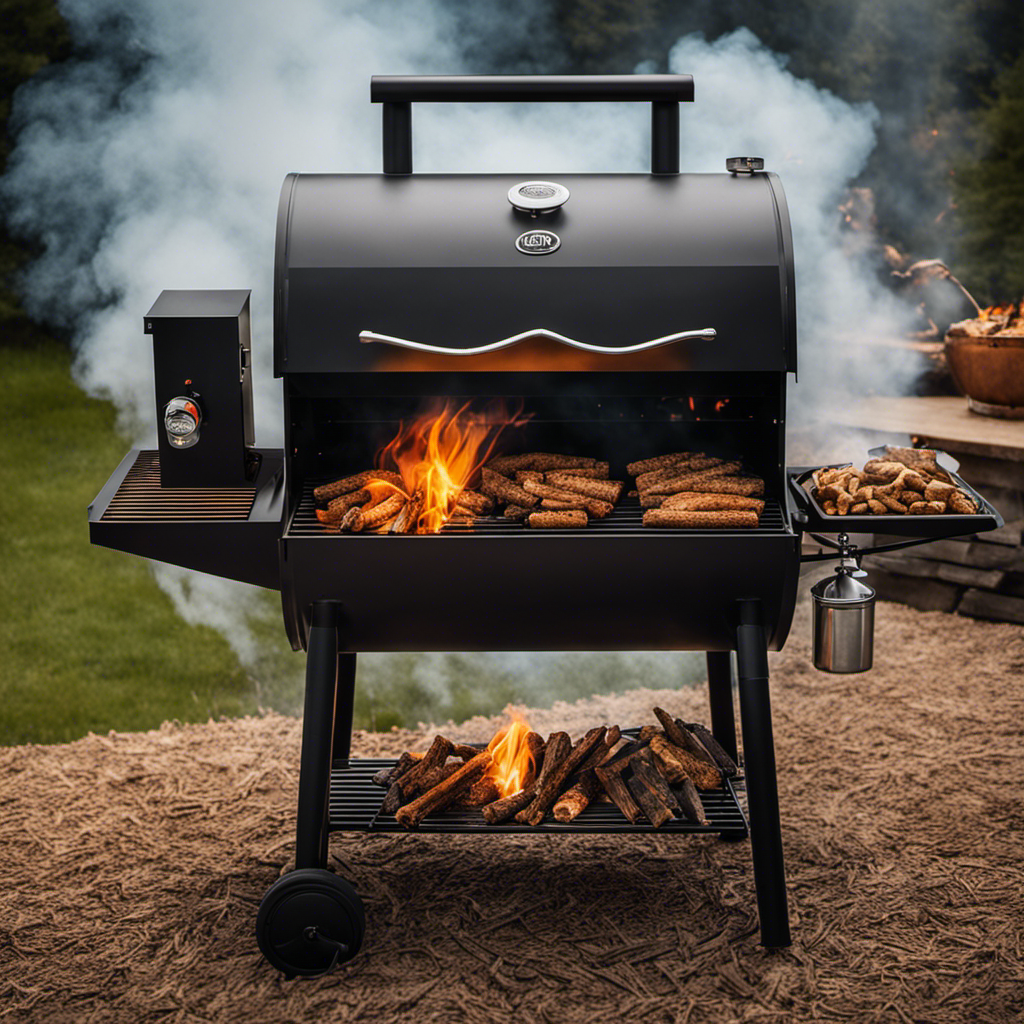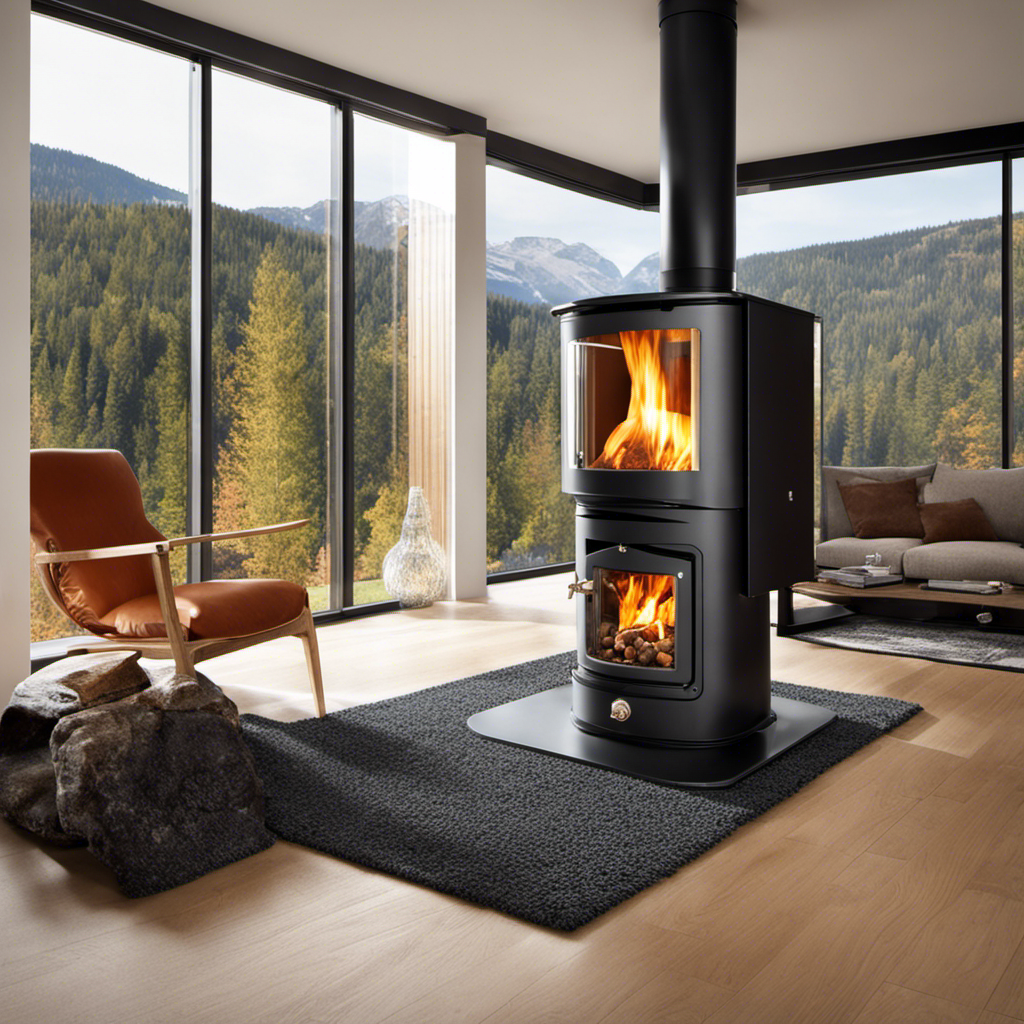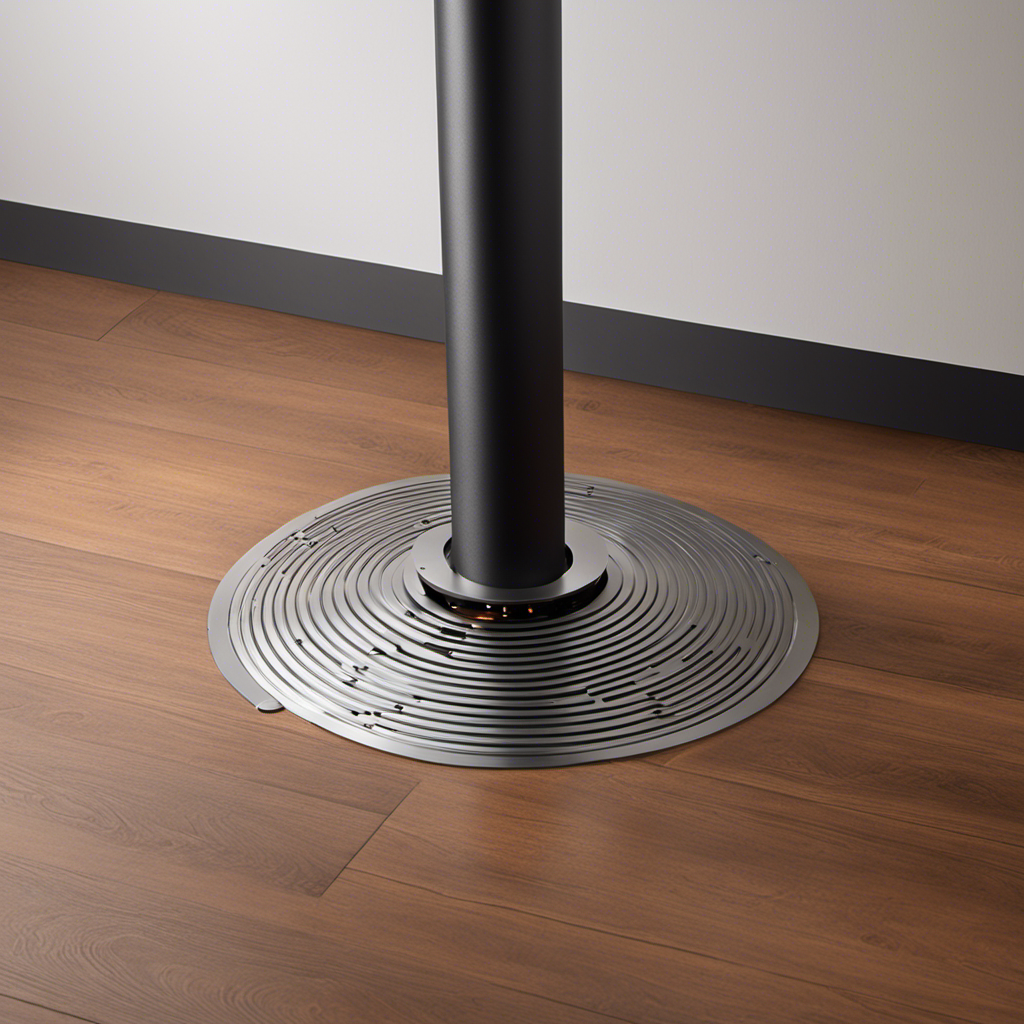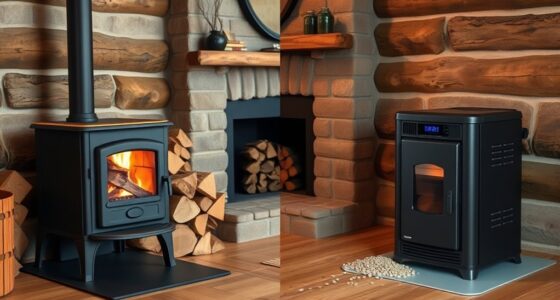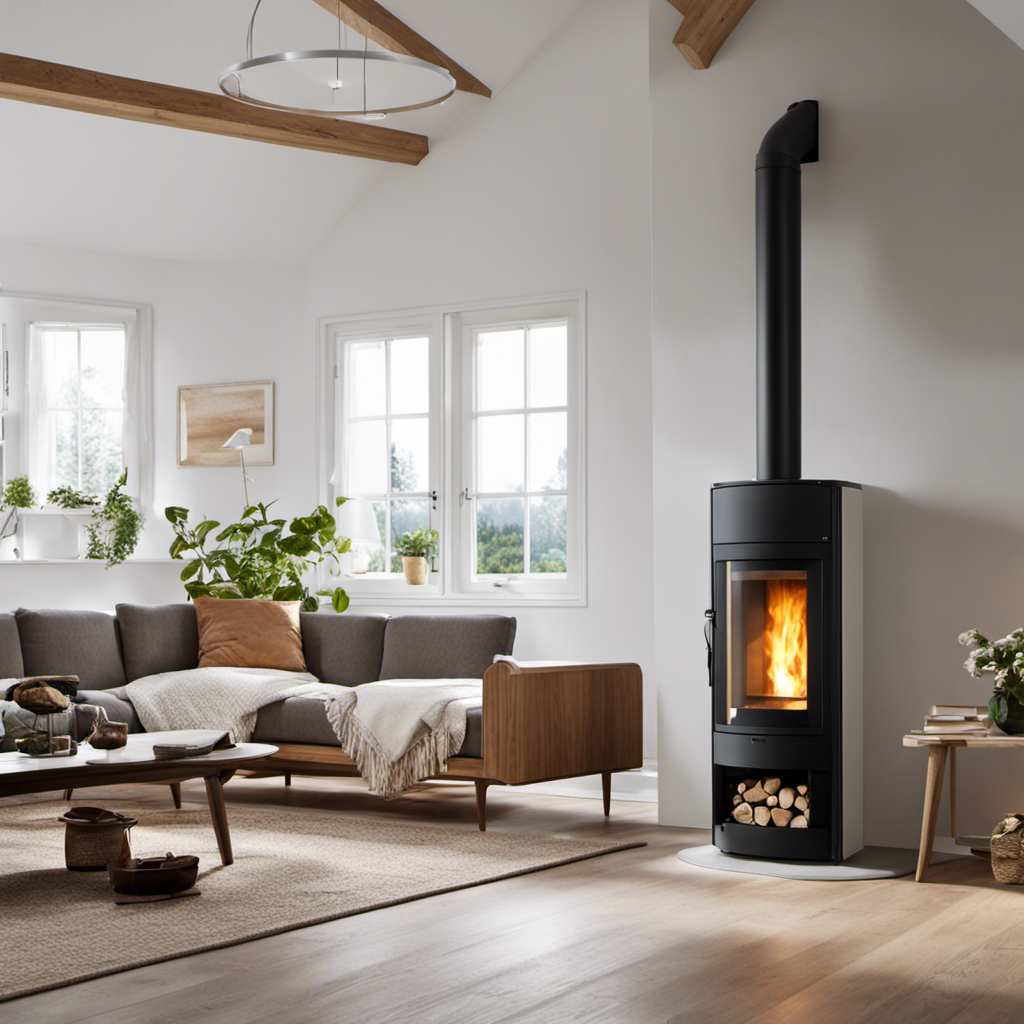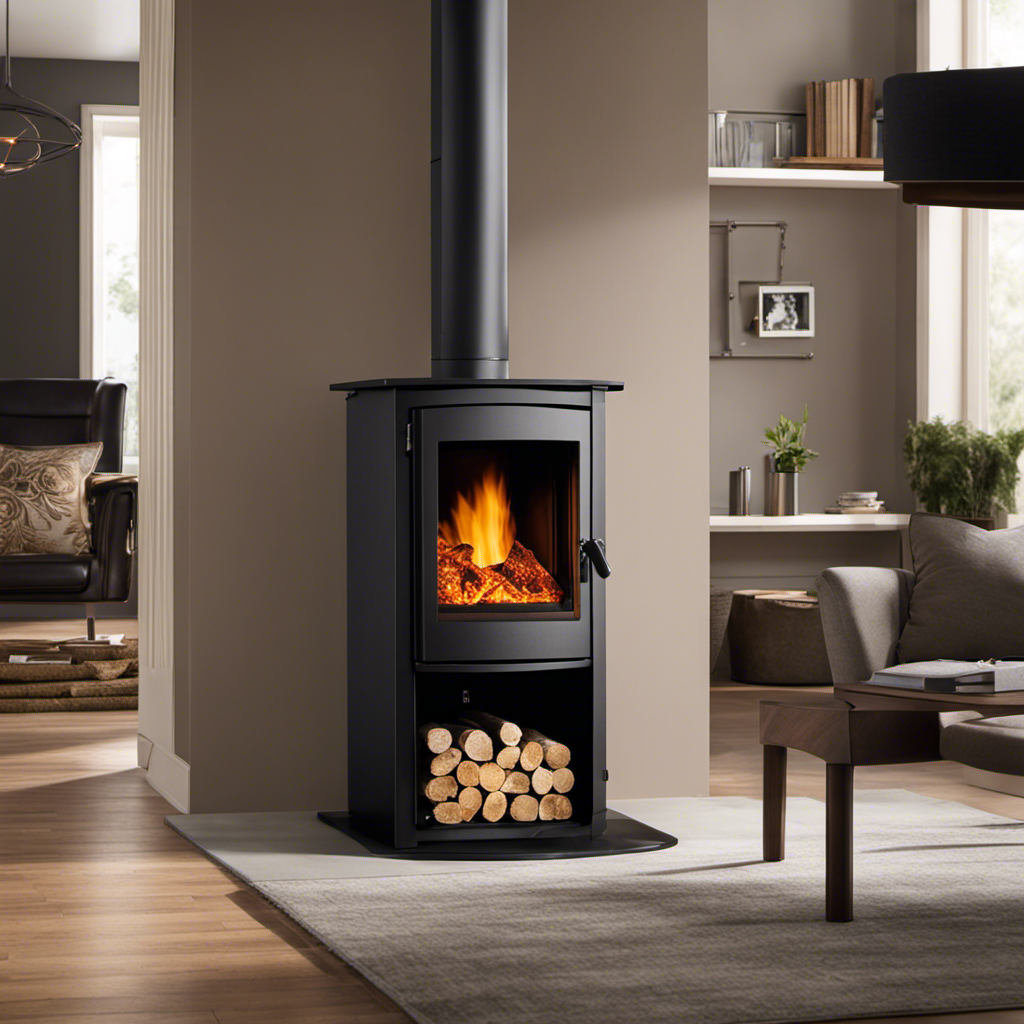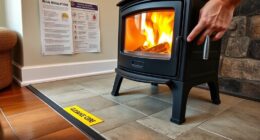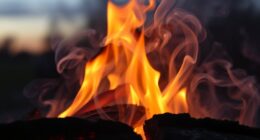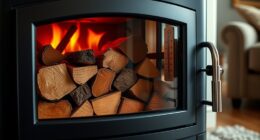As someone who has spent a considerable amount of time using wood pellet grills, I have frequently experienced situations where too much smoke is generated at the beginning. This issue can be both annoying and cause confusion about what is causing it.
But fear not! In this article, I’ll dive into the common causes of excessive smoke during startup and provide you with the knowledge and troubleshooting tips to ensure a smooth and smoke-free grilling experience.
So grab your apron, because we’re about to master the art of lighting up your wood pellet grill like a pro.
Key Takeaways
- The type of wood pellets used can affect the smoke flavor during startup.
- Using too many pellets can result in excessive smoke.
- Cleaning the grill before starting up can help reduce smoke.
- Preheating the grill for 10-15 minutes before placing food on it can help ignite the pellets and minimize smoke.
Common Causes of Excessive Smoke During Startup
If your wood pellet grill is smoking excessively during startup, it’s likely due to one of these common causes.
The first cause could be the type of wood pellets you are using. Different types of wood pellets produce different levels of smoke flavor. Some woods, like mesquite or hickory, have a stronger smoke flavor than others. So if you’re using these types of pellets, it’s normal for your grill to produce more smoke during startup.
Another cause could be the amount of pellets you’re using. Using too many pellets can result in excessive smoke production.
Finally, make sure that your grill is clean and free from any leftover ash or debris as this can also contribute to excess smoke.
Now that we’ve identified some potential causes of excessive smoke during startup, let’s move on to how to properly light your wood pellet grill without any issues.
How to Properly Light Your Wood Pellet Grill
To properly light your wood pellet grill, follow these steps:
-
Choose the right type of wood pellets for grilling. Different types of wood pellets can impart unique flavors to your food. For example, hickory pellets give a smoky and robust taste, while fruitwood pellets like apple or cherry add a subtle sweetness.
-
Fill the hopper with your chosen wood pellets. Ensure it is filled enough to last throughout your cooking session.
-
Set the temperature control dial to the desired temperature. It’s important to maintain consistent temperature control while grilling, so keep an eye on it throughout the process.
-
Turn on the grill and give it some time to heat up. This will allow the pellets to ignite and create a steady flame.
-
Close the lid and let your wood pellet grill preheat for about 10-15 minutes before placing any food on it.
By following these steps, you’ll be able to properly light your wood pellet grill and ensure a successful grilling experience with perfectly cooked food.
Now, let’s move on to troubleshooting tips for excessive smoke at startup without skipping a beat.
Troubleshooting Tips for Excessive Smoke at Startup
Here’s what you can do when your grill is producing too much smoke during startup. Excessive smoke can be a common issue when firing up a wood pellet grill, but there are troubleshooting tips to help you address this problem. One factor to consider is the color of the smoke being produced. By understanding the variations in smoke color, you can better diagnose the issue at hand. Additionally, weather conditions play a significant role in smoke production. Factors such as wind and humidity can affect how much smoke is generated during startup. To provide further insight, here’s a table outlining different smoke colors and their potential causes:
| Smoke Color | Potential Causes |
|---|---|
| White | Ignition Issues |
| Black | Fuel-related |
| Blue | Optimal Burn |
Understanding the impact of weather conditions on smoke production will allow you to make necessary adjustments for a successful startup. Now let’s delve into understanding the role of temperature control in smoke production…
Understanding the Role of Temperature Control in Smoke Production
Understanding how temperature control affects smoke production is crucial for achieving the desired results when using your wood pellet grill. Here are some key points to consider:
-
Importance of seasoning wood pellets for optimal smoke production:
-
Seasoning allows the pellets to release moisture, resulting in a cleaner burn and more consistent smoke.
-
It enhances the flavor profile by reducing any potential bitterness or harshness.
-
Properly seasoned pellets also minimize the chances of excessive smoke during startup.
-
Exploring different wood pellet flavors and their impact on smoke intensity:
-
Different types of wood impart distinct flavors to your food.
-
Hardwoods like oak and hickory produce stronger, robust smokes, ideal for bold-flavored meats.
-
Fruit woods such as apple or cherry create milder, sweeter smokes, perfect for delicate proteins like fish.
By understanding temperature control’s relationship with smoke production and considering factors like seasoning and wood pellet flavor selection, you can achieve optimal results on your wood pellet grill.
Now let’s transition into discussing steps to minimize smoke when starting up your grill without compromising flavor.
Steps to Minimize Smoke When Starting up Your Wood Pellet Grill
When you first fire it up, make sure to set your wood pellet grill to the lowest temperature setting possible. This is an important step in minimizing smoke production and ensuring a smooth start for your grill.
Preheating the grill is crucial as it allows the pellets to ignite properly and burn efficiently, reducing the amount of smoke produced during startup.
To preheat your wood pellet grill, simply turn it on and allow it to reach the desired temperature before adding any food or pellets. This process usually takes around 10-15 minutes, depending on the model and ambient conditions.
During this time, keep the lid closed to trap heat inside and promote even heating throughout the cooking chamber.
Frequently Asked Questions
Can Using Wet or Damp Wood Pellets Cause Excessive Smoke During Startup?
Using wet or damp wood pellets can indeed cause excessive smoke during startup. The moisture in the pellets creates more smoke as it evaporates, leading to a smoky start. It’s best to use dry pellets for a cleaner and smoother grilling experience.
Should I Clean the Fire Pot Before Lighting My Wood Pellet Grill?
Cleaning the fire pot before lighting your wood pellet grill is crucial. It ensures proper airflow and prevents excessive smoke during startup. Also, don’t forget the importance of preheating the grill for a deliciously smoky experience.
Are There Any Specific Weather Conditions That Can Contribute to Excessive Smoke During Startup?
Specific weather conditions, such as high humidity, can contribute to excessive smoke during startup. The moisture in the air can affect the combustion process and cause more smoke.
Can Using a Higher Heat Setting on the Grill Lead to More Smoke During Startup?
Using a higher heat setting on the grill can lead to more smoke during startup. It’s important to note that using different types of wood pellets for smoking and employing different techniques can help control smoke levels.
Is It Normal for the Grill to Produce a Small Amount of Smoke During Startup, Even When Everything Is Functioning Properly?
Yes, it is normal for the grill to produce a small amount of smoke during startup. However, wood pellet grills tend to produce less smoke compared to traditional charcoal grills, reducing potential health risks associated with excessive smoke exposure.
Conclusion
In conclusion, starting up a wood pellet grill can sometimes result in excessive smoke. It may seem like a setback, but fear not! By following the proper lighting techniques and troubleshooting tips provided, you can minimize the smoke and achieve the perfect smoky flavor without overwhelming your senses.
Remember, temperature control plays a crucial role in smoke production, so stay mindful of that as well. With these steps in mind, you’ll be able to enjoy a seamless and satisfying grilling experience every time.
So savor the succulent flavors and let your taste buds tingle with tantalizing tenderness!

